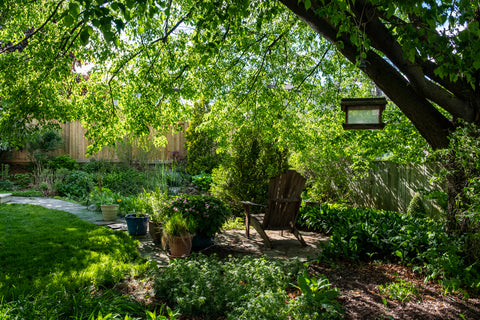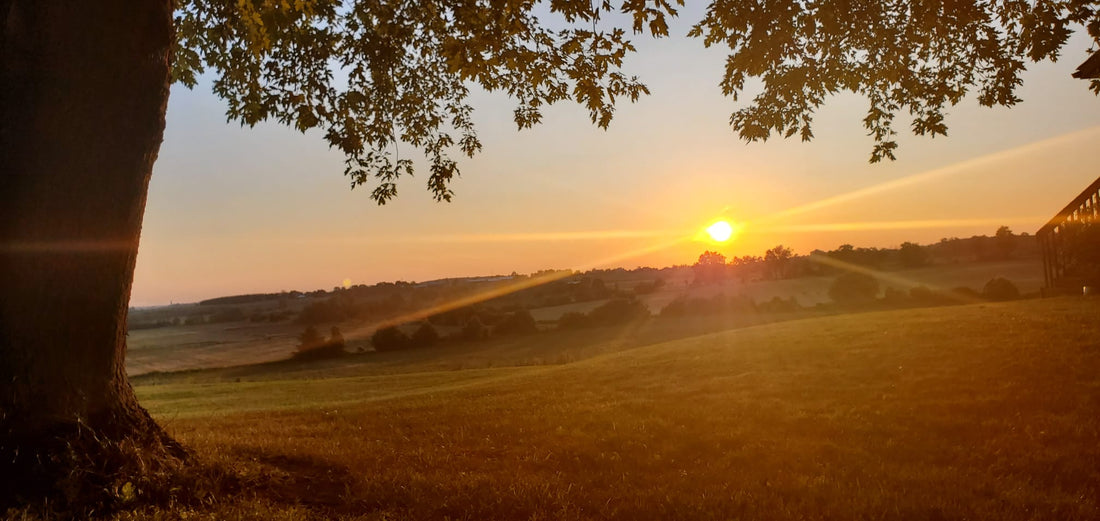Garden Words You Never Knew You Needed
There’s something enchanting about the subtle magic of the garden. Beyond the obvious beauty of flowers in bloom and vegetables ripe for harvest, there’s a symphony of sounds, smells, and sensations that connect us with nature in deeper, often forgotten ways. Let’s dig into the delightful and often overlooked aspects of gardening—psithurism, petrichor, nemophilism, and more—that bring your garden to life.
Psithurism: The Whisper of Leaves
Ever been out in your garden on a breezy day, and the leaves start talking? That’s psithurism—the sound of the wind rustling through the leaves. It’s that soft whisper that turns your garden into a secret world. Whether you’re pruning shrubs or just lounging with a cup of tea, psithurism brings a sense of calm and connection to nature. Plant trees like maple, birch, or oak, which tend to catch the breeze just right, amplifying the gentle rustling sounds.
Pro tip: A well-placed wind chime near your favourite tree adds a little melody to the psithurism symphony!

Petrichor: The Earth’s Post-Rain Perfume
That incredible earthy scent after rain has a name—petrichor. It’s a combination of plant oils and a bacteria called geosmin that gets released when rain hits the ground. In Georgina, with its mix of rainfall and sunny days, this scent is a regular part of the garden experience. Whether you’ve just watered your flowerbeds or it’s rained after a dry spell, that whiff of petrichor reminds you that your garden is alive and thriving.
Geosmin: The Earthy Scent of Soil
Similar to petrichor but more specific to the smell of the soil itself, geosmin is the scent of the earth in its raw, unfiltered glory. The best way to experience it? Get your hands dirty. Dig into that loamy goodness of your garden beds in spring or after a rainfall, and you’ll catch that unmistakable scent of fresh earth. Healthy soil smells the best, so make sure to enrich yours with compost or mulch to heighten your geosmin moments.
Bonus: rich soil also means happier plants!

Nemophilist: A Lover of Forests
If you find yourself drawn to shady, wooded areas or creating a little forest in your backyard with towering trees and lush undergrowth, you, my friend, are a nemophilist—a lover of forests. With our Lake Simcoe landscape rich in evergreens like cedar and pine, along with deciduous beauties like oak and maple, it’s easy to bring a touch of the wild woods into your own space. Add ferns, hostas, and shade-loving perennials for that deep forest vibe right at home.
Feuillemort: The Colours of Fading Leaves
Autumn in Georgina is a tapestry of feuillemort, the term used to describe the dull brown and fading colours of leaves in the fall. It's that bittersweet beauty you witness when summer’s lush greens turn to russets, ochres, and rich browns. Celebrate feuillemort in your garden by planting trees with striking fall colour, like autumn blaze maples or burning bushes. Embrace the beauty of the dying season before winter settles in.

Frondescence: The Burst of New Growth
When your garden comes back to life after a long Canadian winter, that's frondescence in action—the lush unfolding of leaves and greenery. From early spring perennials to new buds on trees, frondescence is a sign of hope and renewal. For a garden that explodes into life, plant hardy perennials like hostas or shrubs like hydrangeas that will burst with fresh growth every spring.
Frondescence hack: Add a bit of organic fertilizer in early spring to give your plants a growth boost. You’ll be rewarded with extra lush greenery!
Gökotta: The Dawn Chorus
Gökotta is a Swedish word that means waking up early to hear the birds sing. Keswick gardens are home to a variety of bird species, from chickadees to robins, and nothing beats an early morning spent listening to their dawn chorus. Create a bird-friendly garden by planting berry-producing shrubs like serviceberry or elderberry, and install a few bird feeders to attract your local feathered friends.
Tip for bird lovers: A shallow birdbath will keep your garden’s birds coming back for a drink or a splash—just remember to clean it regularly.

Komorebi: Sunlight Filtering Through Trees
Komorebi is a Japanese word that refers to sunlight filtering through the leaves of trees. It’s the dappled light that creates magical patterns on the forest floor or in your backyard when the sun peeks through the branches. Trees like birch and Japanese maples, with their delicate leaves, are perfect for creating this effect. Add a few garden benches under your favourite tree and enjoy the natural light show.
Apricity: The Warmth of the Winter Sun
Winter doesn’t mean the gardening magic stops. Apricity is the feeling of warmth from the winter sun. In Keswick, where winters can be harsh, those bright, sunlit days are something to cherish. Consider planting evergreens like boxwood or cedar to provide structure to your winter garden. When the snow hits, these plants will still offer colour and texture—and those sunny winter afternoons? Pure apricity.

Parhelion: The Phantom Suns
Have you ever seen a bright spot or halo around the sun in winter? That’s parhelion, or a sun dog. While it’s more of a cold-weather phenomenon, it reminds us that even in the depth of winter, there’s beauty in the skies above our gardens. As the sun reflects off ice crystals in the air, it creates a visual effect that’s as stunning as a summer bloom.
So there you have it, a garden isn’t just a plot of land with plants. It’s a living, breathing canvas where nature’s most poetic moments unfold right before your eyes (and ears, and nose). Whether you’re drawn to the psithurism of wind in the trees or the earthy scent of petrichor, your garden has endless experiences to offer. All you have to do is slow down, listen, and let the magic reveal itself.
Happy gardening!🌿




